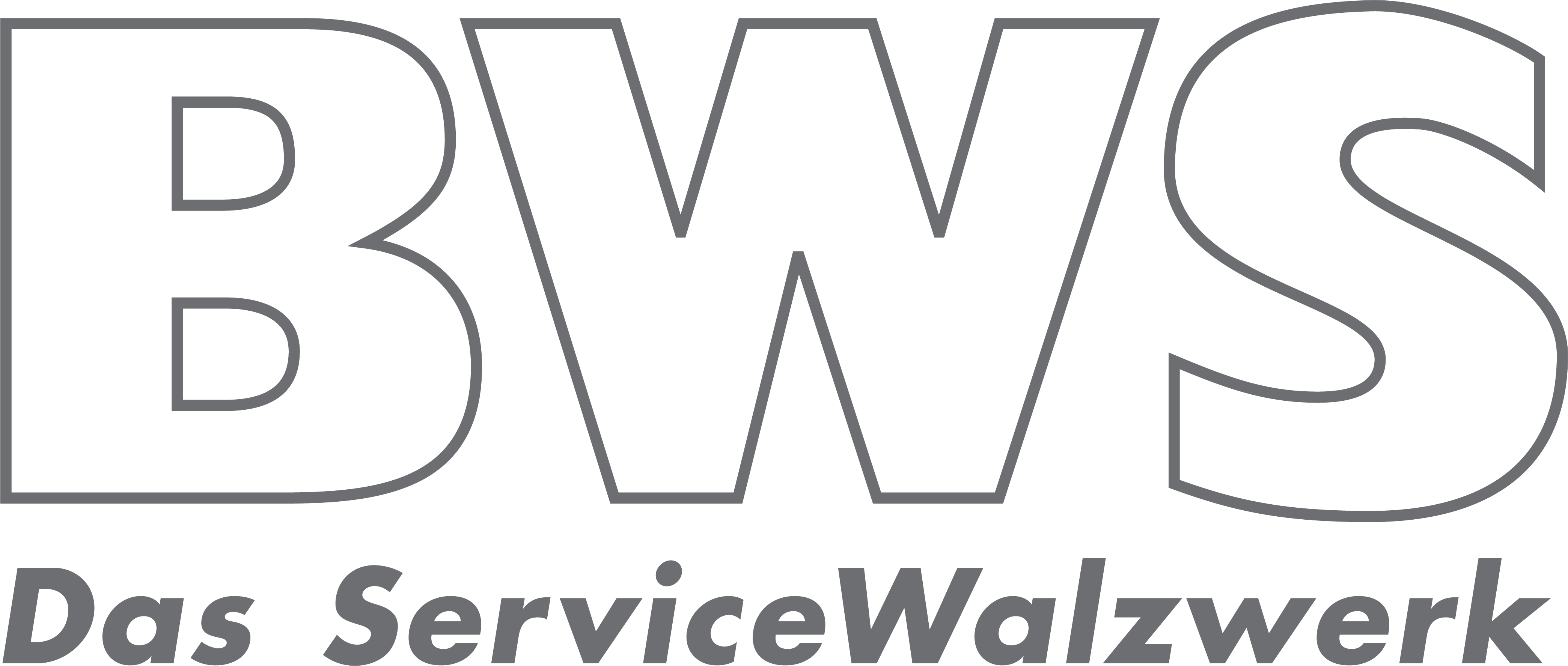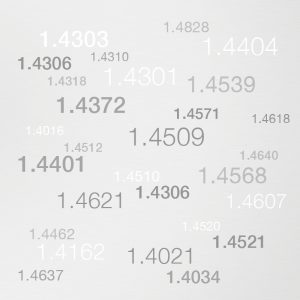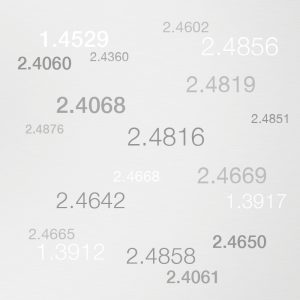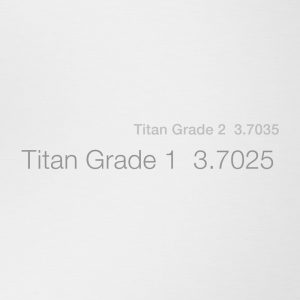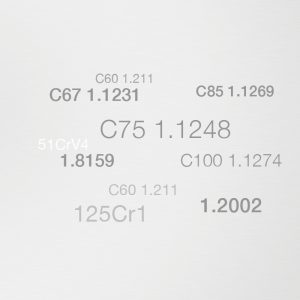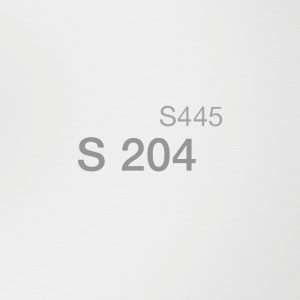Stainless steels
Austenites
Austenitic stainless grades have very good forming properties. Steel strips with an austenitic microstructure are used to produce complex geometries. By alloying the material with for example chromium and molybdenum, it produces grades with excellent corrosion properties that can withstand demanding environments such as coastal areas or the chemical industry. Due to their low carbon content, austenite’s are readily weldable, and stabilized grades with niobium or titanium are particularly suitable.
The austenitic material 1.4310 (AISI 301), for example, can be used in both the soft and temper rolled states with tensile strengths of up to 2200 MPa. With an additional heat treatment after cold rolling – tempering – the spring properties can be further improved.
Material number
EN DIN
US
Product
1.4301¹/1.4301S4
X5CrNi18-10
S30400/ S30451
![]()
![]()
![]()
1.4303¹/1.4303S4
X4CrNi18-12
S30500
![]()
![]()
1.4306¹
X2CrNi19-11
S30403
![]()
![]()
1.4310²
X10CrNi18-8
S30100
![]()
![]()
1.4318
X2CrNiN18-7
![]()
![]()
![]()
1.4372²
X12CrMnNiN17-7-5
S20100
![]()
![]()
![]()
1.4401¹
X5CrNiMo17-12-2
S31600
![]()
![]()
![]()
1.4404¹
X2CrNiMoN17-12-2
S31603
![]()
![]()
![]()
1.4539¹
X1NiCrMoCu25-20-5
N08904
![]()
![]()
![]()
1.4541¹
X6CrNiTi18-10
S32100
![]()
![]()
![]()
1.4571¹
X6 CrNiMoTi17-12-2
S31635
![]()
![]()
![]()
1.4618
X9CrMnNiCu17-8-5-2
S20433
![]()
![]()
![]()
1.4640
X5CrNiCu19-6-2
![]()
![]()
![]()
1.4828
X15CrNiSi20-12
S30900
![]()
![]()
![]() Federband
Federband ![]() Präzisband
Präzisband ![]() Serviceband
Serviceband
Precipitation hardenable stainless steels
Precipitation-hardenable stainless steels with an austenitic microstructure can be heat-treated after the forming process to increase their tensile strength. These special steels are used whenever complex components have to be formed which place high demands on tensile strength and corrosion resistance. In contrast to martensite, these hardenable special steels require almost no carbon. Elements such as aluminium are used to strengthen the material through microprecipitation.
The material 1.4568 (AISI 631) is a typical example of a precipitation-hardenable stainless steel. By alloying the material with aluminium, the precipitation hardening property is favoured. Some types of the material 1.4568 are hardenable in both the temper rolled and soft states. Tensile strengths of up to 1800 MPa can be achieved by suitable heat treatment.
Material number
EN DIN
US
Product
1.4568²
X7CrNiAl17-7
S30900
![]()
![]()
![]()
![]() Federband
Federband ![]() Präzisband
Präzisband ![]() Serviceband
Serviceband
Ferrites
Ferritic stainless grades have good to very good corrosion properties in mildly corrosive environments and good resistance to heat oxidation up to 950 degrees Celsius. In the solution-annealed condition, ferrites can be readily formed. Typical applications for the materials are household goods, consumer products or optical construction elements. Ferrites can be welded to a limited extent. The weldability can be improved by alloying it with niobium and titanium.
The ferritic material 1.4016 (AISI 430) combines good corrosion properties with excellent formability and is therefore one of the most commonly used ferritic materials. BWS offers variants of this material which far exceed the forming properties of the standard quality.
Material number
EN DIN
US
Product
1.4016¹
X6Cr17
S43000
![]()
![]()
1.4509¹
X2CrTiNb18
S43940
![]()
![]()
1.4510
X3CrTi17
S43036
![]()
![]()
1.4512
X2CrTi12
S40900
![]()
![]()
1.4520
X2CrTi17
![]()
![]()
1.4521¹
X2CrMoTi18-2
S44400
![]()
![]()
1.4607
X2CrNbTi20
![]()
![]()
1.4621
X2CrNbCu 21
![]()
![]()
![]() Federband
Federband ![]() Präzisband
Präzisband ![]() Serviceband
Serviceband
Martensites
Martensites are stainless grades which are hardenable due to their carbon content. The quenching and tempering process makes it possible to achieve particularly high tensile strengths with relatively good toughness which is for example required for the manufacturing of knife blades and technical springs. Martensites have good corrosion resistance in atmospheric environments and weak organic acids. However, they have limited weldability and may require post-treatment.
An example of a martensitic material is grade1.4034. This grade is resistant in moderately aggressive media and has optimum corrosion resistance in the hardened state with a polished or grinded surface. Hardnesses of up to 55 HRC are possible through heat treatment.
Material number
EN DIN
US
Product
1.4021¹
X20Cr13
S42000
![]()
![]()
![]()
1.4034¹
X46Cr13
S42000
![]()
![]()
![]()
![]() Federband
Federband ![]() Präzisband
Präzisband ![]() Serviceband
Serviceband
Duplex steels
Duplex stainless steels combine the positive properties of austenites and ferrites, high corrosion resistance combined with high resistance to pitting. The combination of tensile strength and toughness results in high fatigue tensile strength even under high corrosive stress. Duplex steels are in particular demand in the area of seawater desalination machines, flue gas cleaning machines or in the chemical process industry in general. Like austenites, duplex steels have good weldability.
Due to its increased chromium content, material 1.4462 offers very good corrosion resistance to pitting and surface corrosion as well as good resistance to seawater. Compared with ferritic and austenitic steels, this material has an increased yield strength even in the soft state, an advantage if weight savings are to play a role.
Material number
EN DIN
US
Product
1.4162¹
X2CrMnNiN22-5-2
S32101
![]()
![]()
![]()
1.4462¹
X2CrNiMoN22-5-3
S31803, S32205, S39209
![]()
![]()
![]()
1.4637
S82031
![]()
![]()
![]()
![]() Federband
Federband ![]() Präzisband
Präzisband ![]() Serviceband
Serviceband
Overview of all stainless steels
Stainless steel; material standard: 10088-2 & 10151 / standard of dimension and shape EN ISO 9445 : 2010 | |||||||||||||
EN-material number | EN-Code | ASTM / AISI | C | Si | Mn | Cr | Ni | Mo | Others | Rp0,2 [MPa] | Rp1,0 [MPa] | Rm | A80 [min.%] |
1.4016¹ | X6 Cr17 | 430 | ≤ 0,08 | ≤ 1,00 | ≤ 1,00 | 16,0-18,0 | - | - | - | ≥ 280 | - | 450-600 | 20 |
1.4021¹ | X20 Cr13 | 420 | 0,16-0,25 | ≤ 1,00 | ≤ 1,50 | 12,0-14,0 | - | - | - | - | - | ≤ 700 | 15 |
1.4034¹ | X46 Cr13 | - | 0,43 - 0,50 | ≤ 1,00 | ≤ 1,00 | 12,5-14,5 | - | - | - | - | - | ≤ 780 | 12 |
1.4162¹ | X2 CrMnNiN 22-5-2 | S 32101 | ≤ 0,04 | ≤ 1,00 | 4,00-6,00 | 21,0-22,0 | 1,35 - 1,70 | 0,10 - 0,80 | N 0,20-0,25 | ≥ 450 | - | 700-840 | 30 |
1.4301¹/ | X5 CrNi 18-10 | 304 / 304 S | ≤ 0,07 | ≤ 1,00 | ≤ 2,00 | 17,0-19,5 | 8,0-10,5 | - | N ≤ 0,11 | ≥ 230 | ≥ 260 | 540-750 | 45 |
1.4303¹/ | X4 CrNi 18-12 | 305 / 305 S | ≤ 0,06 | ≤ 1,00 | ≤ 2,00 | 17,0-19,0 | 11,0-13,0 | - | N ≤ 0,11 | ≥ 220 | ≥ 250 | 500-650 | 45 |
1.4306¹ | X2 CrNi 19-11 | 304 L | ≤ 0,03 | ≤ 1,00 | ≤ 2,00 | 18,0-20,0 | 10,0-12,0 | - | N ≤ 0,11 | ≥ 220 | ≥ 250 | 520-670 | 45 |
1.4310² | X10 CrNi 18-8 | 301 | 0,05-0,15 | ≤ 2,00 | ≤ 2,00 | 16,0-19,0 | 6,0-9,5 | ≤ 0,80 | N ≤ 0,11 | ≥ 250 | ≥ 280 | 900-2200 | 40³ |
1.4318 | X2 CrNiN 18-7 | 301 LN | ≤ 0,03 | - | ≤ 2,00 | 16,5-18,5 | 6,5-8,0 | - | N ≤ 0,20 | ≥ 350 | ≥ 380 | 650-850 | ≥ 35 |
1.4372² | X12 CrMnNiN 17-7-5 | 201 | ≤ 0,15 | ≤ 1,00 | 5,50-7,50 | 16,0-18,0 | 3,50-5,50 | - | N 0,05-0,25 | ≥ 350 | 380 | 850-1700 | 45³ |
1.4401¹ | X5 CrNiMo 17-12-2 | 316 | ≤ 0,07 | ≤ 1,00 | ≤ 2,00 | 16,5-18,5 | 10,0-13,0 | 2,0 - 2,5 | N ≤ 0,11 | ≥ 220 | ≥ 270 | 530-680 | 40 |
1.4404¹ | X2 CrNiMoN 17-12-2 | 316 L | ≤ 0,03 | ≤ 1,00 | ≤ 2,00 | 16,5-18,5 | 10,0-13,0 | 2,0 - 2,5 | N ≤ 0,11 | ≥ 240 | ≥ 270 | 530-680 | 40 |
1.4462¹ | X2 CrNiMoN 22-5-3 | 318 LN | ≤ 0,03 | ≤ 1,00 | ≤ 2,00 | 21,0-23,0 | 4,5-6,5 | 2,5 - 3,5 | N 0,10-0,22 | ≥ 500 | - | 660-950 | 20 |
1.4509¹ | X2 CrTiNb 18 | 441 | ≤ 0,03 | ≤ 1,00 | ≤ 1,00 | 17,5-18,5 | - | - | Ti0,10-0,60Nb | ≥ 250 | - | 430-630 | 18 |
1.4510 | X3 CrTi 17 | 430 Ti | ≤ 0,05 | ≤ 1,00 | ≤ 1,00 | 16,0-18,0 | - | - | Ti[4x(C+N)+0,15] | ≥ 240 | - | 420-600 | 23 |
1.4512 | X2 CrTi 12 | 409 | ≤ 0,03 | ≤ 1,00 | ≤ 1,00 | 10,5-12,5 | - | - | Ti [6x(C+N) | ≥ 220 | - | 380-560 | 25 |
1.4520 | X2 CrTi 17 | 439 | ≤ 0,025 | ≤ 0,50 | ≤ 0,50 | 16,0-18,0 | - | - | N ≤ 0,015, | ≥ 200 | - | 380-530 | 24 |
1.4521¹ | X2 CrMoTi 18-2 | 444 | ≤ 0,025 | ≤ 1,00 | ≤ 1,00 | 17,0-20,0 | - | 1,80-2,50 | Ti [4 (C+N)+0,15] | ≥ 320 | - | 420-640 | 20 |
1.4539¹ | X1 NiCrMoCu25-20-5 | 904 L | ≤ 0,02 | ≤ 0,70 | ≤ 2,00 | 19,0-21,0 | 24,0-26,0 | 4,0 - 5,0 | Cu 1,2 - 2,0; | ≥ 240 | ≥ 270 | 530-730 | 35 |
1.4541¹ | X6 CrNiTi 18-10 | 321 | ≤ 0,08 | ≤ 1,00 | ≤ 2,00 | 17,0-19,0 | 9,0-12,0 | - | Ti 5xC ≤ 0,70 | ≥ 220 | ≥ 250 | 520-720 | 40 |
1.4568² | X7 CrNiAl 17-7 | 17/7 PH | ≤ 0,09 | ≤ 0,70 | ≤ 1,00 | 16,0-18,0 | 6,5-7,8 | - | Al 0,70 - 1,50 | - | - | 1000-1800 | 19³ |
1.4571¹ | X6 CrNiMoTi 17-12-2 | 316 Ti | ≤ 0,08 | ≤ 1,00 | ≤ 2,00 | 16,5-18,5 | 10,5 - 13,5 | 2,0 - 2,5 | Ti 5xC ≤ 0,70 | ≥ 240 | ≥ 270 | 540-690 | 40 |
1.4607 | X2 CrNbTi 20 | - | ≤ 0,030 | ≤ 1,00 | ≤ 1,00 | 18,5-20,5 | - | - | N ≤ 0,030,Ti[4x(C+N)+0,15] ≤ 0,80 | ≥ 330 | - | 430-580 | ≥ 30 |
1.4618 | X9CrMuNiCu17-8-5-2 | 201-1 | ≤ 0,10 | ≤ 1,00 | 5,50-7,50 | 16,5-18,5 | 4,5-5,5 | - | N ≤ 0,15, Cu 1,0-2,5 | 280-380 | - | 600-750 | ≥ 35 |
1.4621 | X2 CrNbCu 21 | UNS 44500 | ≤ 0,015 | - | ≤ 1,00 | 20,0-23,0 | - | - | N ≤ 0,020, Cu 0,30-0,70, Nb ≤ 0,50 | ≥ 245 | - | ≥ 410 | ≥ 40 |
1.4640 | X5 CrNiCu 19-6-2 | 301 Cu | ≤ 0,08 | - | 1,50-4,00 | 18,0-19,0 | 5,5-6,9 | - | N 0,03-0,11, Cu 1,30-2,0 | ≥ 250 | - | 540-750 | ≥ 43 |
1.4828 | X15 | ~ 309 | ≤ 0,20 | 1,50- | ≤ 2,00 | 19,0-21,0 | 11,0-13,0 | - | N ≤ 0,11 | ≥ 230 | - | 500-750 | 28 |
¹. Material also available in temper-rolled condition (Rm ≥ 800 MPa) | |||||||||||||

